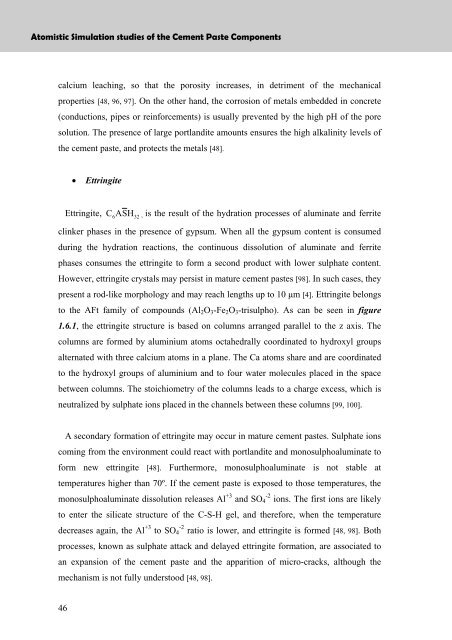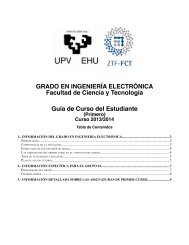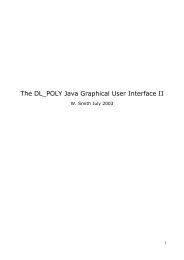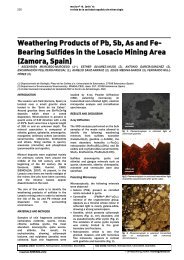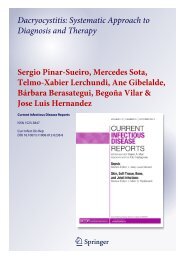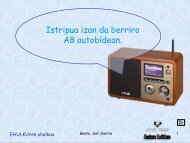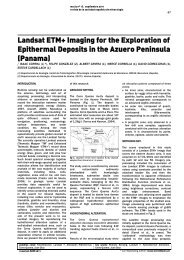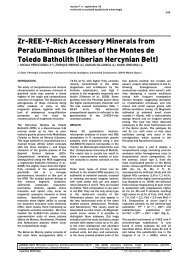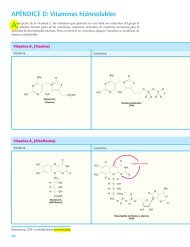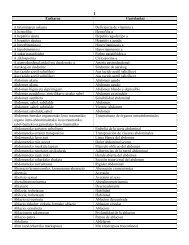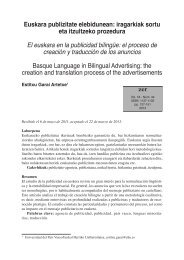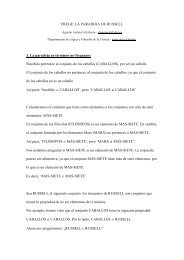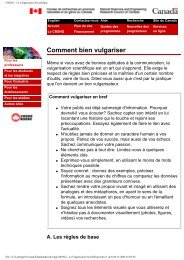Atomistic Simulation studies of the Cement Paste Components
Atomistic Simulation studies of the Cement Paste Components
Atomistic Simulation studies of the Cement Paste Components
Create successful ePaper yourself
Turn your PDF publications into a flip-book with our unique Google optimized e-Paper software.
<strong>Atomistic</strong> <strong>Simulation</strong> <strong>studies</strong> <strong>of</strong> <strong>the</strong> <strong>Cement</strong> <strong>Paste</strong> <strong>Components</strong><br />
calcium leaching, so that <strong>the</strong> porosity increases, in detriment <strong>of</strong> <strong>the</strong> mechanical<br />
properties [48, 96, 97]. On <strong>the</strong> o<strong>the</strong>r hand, <strong>the</strong> corrosion <strong>of</strong> metals embedded in concrete<br />
(conductions, pipes or reinforcements) is usually prevented by <strong>the</strong> high pH <strong>of</strong> <strong>the</strong> pore<br />
solution. The presence <strong>of</strong> large portlandite amounts ensures <strong>the</strong> high alkalinity levels <strong>of</strong><br />
<strong>the</strong> cement paste, and protects <strong>the</strong> metals [48].<br />
• Ettringite<br />
Ettringite, CASH 6 32 , is <strong>the</strong> result <strong>of</strong> <strong>the</strong> hydration processes <strong>of</strong> aluminate and ferrite<br />
clinker phases in <strong>the</strong> presence <strong>of</strong> gypsum. When all <strong>the</strong> gypsum content is consumed<br />
during <strong>the</strong> hydration reactions, <strong>the</strong> continuous dissolution <strong>of</strong> aluminate and ferrite<br />
phases consumes <strong>the</strong> ettringite to form a second product with lower sulphate content.<br />
However, ettringite crystals may persist in mature cement pastes [98]. In such cases, <strong>the</strong>y<br />
present a rod-like morphology and may reach lengths up to 10 μm [4]. Ettringite belongs<br />
to <strong>the</strong> AFt family <strong>of</strong> compounds (Al 2 O 3 -Fe 2 O 3 -trisulpho). As can be seen in figure<br />
1.6.1, <strong>the</strong> ettringite structure is based on columns arranged parallel to <strong>the</strong> z axis. The<br />
columns are formed by aluminium atoms octahedrally coordinated to hydroxyl groups<br />
alternated with three calcium atoms in a plane. The Ca atoms share and are coordinated<br />
to <strong>the</strong> hydroxyl groups <strong>of</strong> aluminium and to four water molecules placed in <strong>the</strong> space<br />
between columns. The stoichiometry <strong>of</strong> <strong>the</strong> columns leads to a charge excess, which is<br />
neutralized by sulphate ions placed in <strong>the</strong> channels between <strong>the</strong>se columns [99, 100].<br />
A secondary formation <strong>of</strong> ettringite may occur in mature cement pastes. Sulphate ions<br />
coming from <strong>the</strong> environment could react with portlandite and monosulphoaluminate to<br />
form new ettringite [48]. Fur<strong>the</strong>rmore, monosulphoaluminate is not stable at<br />
temperatures higher than 70º. If <strong>the</strong> cement paste is exposed to those temperatures, <strong>the</strong><br />
monosulphoaluminate dissolution releases Al +3 and SO -2 4 ions. The first ions are likely<br />
to enter <strong>the</strong> silicate structure <strong>of</strong> <strong>the</strong> C-S-H gel, and <strong>the</strong>refore, when <strong>the</strong> temperature<br />
decreases again, <strong>the</strong> Al +3 to SO -2 4 ratio is lower, and ettringite is formed [48, 98]. Both<br />
processes, known as sulphate attack and delayed ettringite formation, are associated to<br />
an expansion <strong>of</strong> <strong>the</strong> cement paste and <strong>the</strong> apparition <strong>of</strong> micro-cracks, although <strong>the</strong><br />
mechanism is not fully understood [48, 98].<br />
46


